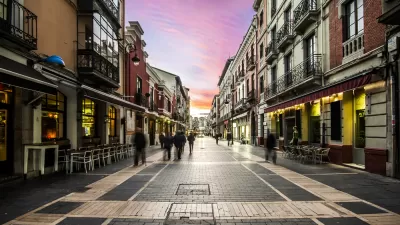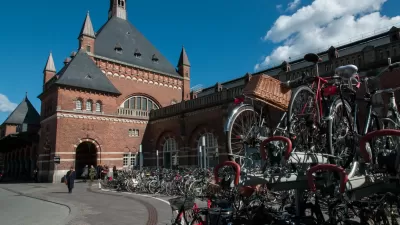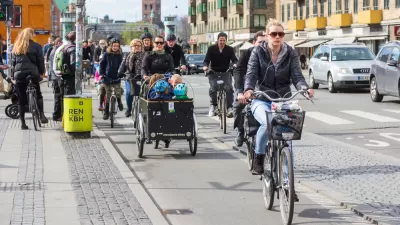Copenhagen wasn't always the "pedaler’s paradise" that it is today. Through the early twentieth century the Danish capital embraced the bike, but after WWII it experimented with American style development. How did the city get back on track?
John Greenfield discusses Copenhagen's history of multi-modalism with Danish Cyclists’ Federation director Jens Loft Rasmussen and project manager Mai-Britt Kristensen. Despite is global reputation for bike-friendliness, the path to pedaling paradise wasn't always clear. As Rasmussen describes: "When the bicycle was introduced in Denmark it became very popular. The Danish Cyclists’ Federation was founded in 1905. And during the Second World War you couldn’t get gasoline, so everybody used their bikes. But after the war we introduced the American lifestyle. In the Sixties people moved to new suburbs and kept their jobs in downtown Copenhagen. So how could they get from their new house in the suburbs to their job in central Copenhagen? In their car of course."
"The modal split in 1970 was about ten percent biking. [To put this in perspective, the mode share in Portland, Oregon, America's most bike-friendly major city, is roughly six percent.] But then we got the oil crisis. We had been totally dependent on gasoline from the Middle East and when it stopped the government had to introduce car-free Sundays. And then people realized that the car-free Sunday was the best day of the week, or some people did. They joined the Danish Cyclists’ Federation and there were huge demonstrations in Copenhagen. The attitude of the city government changed step-by-step from building highways to the center of Copenhagen to realizing that bicycling was a very important part of the transportation picture."
With the bike modal split at 35 percent currently, Rasmussen and Kristensen go on to describe how the city plans to expand its bike infrastructure and keep that share rising.
FULL STORY: Danish History: How Copenhagen became bike-friendly again

Planetizen Federal Action Tracker
A weekly monitor of how Trump’s orders and actions are impacting planners and planning in America.

Map: Where Senate Republicans Want to Sell Your Public Lands
For public land advocates, the Senate Republicans’ proposal to sell millions of acres of public land in the West is “the biggest fight of their careers.”

Restaurant Patios Were a Pandemic Win — Why Were They so Hard to Keep?
Social distancing requirements and changes in travel patterns prompted cities to pilot new uses for street and sidewalk space. Then it got complicated.

DC Area County Eliminates Bus Fares
Montgomery County joins a growing trend of making transit free.

Platform Pilsner: Vancouver Transit Agency Releases... a Beer?
TransLink will receive a portion of every sale of the four-pack.

Toronto Weighs Cheaper Transit, Parking Hikes for Major Events
Special event rates would take effect during large festivals, sports games and concerts to ‘discourage driving, manage congestion and free up space for transit.”
Urban Design for Planners 1: Software Tools
This six-course series explores essential urban design concepts using open source software and equips planners with the tools they need to participate fully in the urban design process.
Planning for Universal Design
Learn the tools for implementing Universal Design in planning regulations.
Heyer Gruel & Associates PA
JM Goldson LLC
Custer County Colorado
City of Camden Redevelopment Agency
City of Astoria
Transportation Research & Education Center (TREC) at Portland State University
Camden Redevelopment Agency
City of Claremont
Municipality of Princeton (NJ)





























